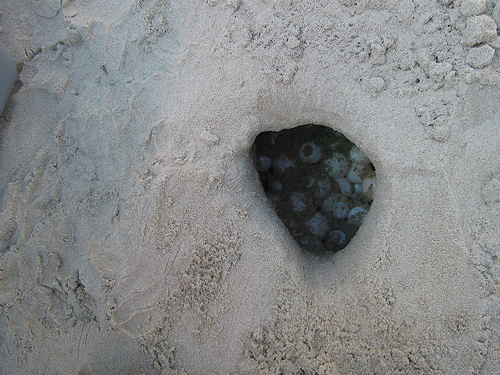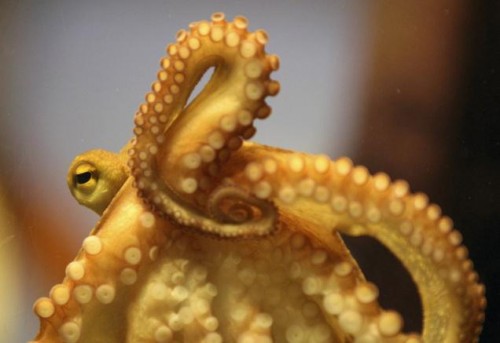For turtles, nesting grounds are the most secure place on earth. They may be wandering all across the world oceans throughout the year, but it is here that they come year after year to lay eggs and bring the next generation into the world. Sadly, marine scientists have found that turtle nesting grounds in many parts of the world, including India are vanishing due to climate change. What is even more distressing is that many of these may have already faced irreparable damage.

A new study conducted by Dr Mariana Fuentes from the ARC Centres of Excellence for Coral Reef Studies (CoECRS) and James Cook University has found that in order to protect the world turtles, it will be first very crucial to save their nesting grounds or nurseries that are being plundered due to global warming and climate change.
The areas of particular importance are,
West Indian Ocean,
Northeast Indian Ocean,
North Pacific Ocean,
East Atlantic Ocean,
and the East Pacific Ocean
Broken Nests
The scientist added that climate change could affect nesting beaches in many ways. Being the land closest to the sea, the beaches are the first to get submerged in rising sea water as glaciers melt due to warming temperatures. Climate change also causes more sea cyclones, leads the eggs to hatch early or produce an unnatural sex ratio and adversely affects their food sources.
“To give marine turtles a better chance of coping with climate change, we have to protect their nesting sites and to address threats such as bycatch and coastal development,” says Dr Mariana Fuentes. “We have seen sea turtle populations decline dramatically in recent decades, and it is likely to get worse due to climate change, as they’re particularly vulnerable to it.”
To tackle the growing problem of changing climate, the scientists says,
“At present there are three ways we can tackle climate-related threats. We can reduce global greenhouse emissions, actively manage for direct impacts from climate change by manipulating the nesting thermal environment with shade, for example, and build the turtles’ resilience, that is, their ability to recover from the negative impacts.”
But reducing carbon emission is not an easy task. Also, even if everyone consciously made an effort to reduce their carbon footprint, it would not help the nesting sites that have already been damaged.
“Also, we don’t know the risks of implementing actions, such as relocating, manipulating or managing turtle populations, or how effective these strategies are,” she says. “So until we understand more about the risks and effects of active strategies, we should focus on increasing the turtles’ resilience.
“This means that we must better understand what factors influence their ability to recover from the negative effects of climate change.”
What also effects the turtles apart from the damaged nesting grounds is coastal development and being caught in the fishing net as a by catch. The experts believe that these are some problems that can be looked into and stopped to make sure that more turtles do reach safely the nesting areas and lay eggs.
Problem sites
The researchers also pinpointed the world’s 13 turtle regional management units — large scale conservation areas — that are the least resilient to climate change.

These are distributed across three major ocean basins and are important breeding grounds for six of the world’s seven species of sea turtle — flatbacks, loggerheads, green turtles, leatherbacks, hawksbills, olive ridleys and Kemp’s ridleys.
“Eleven of the least resilient conservation areas that we identified are the ones most likely to lose their turtle rookeries,” Dr Fuentes says. “This highlights the particular importance of protecting key regional nesting beaches and to legally protect areas that may be suitable for turtle nesting in the future.
“Turtles have existed for millions of years and were here long before humans. It would be a complete tragedy if they were to become extinct as a result of our actions and our lack of care.”
In India the Orissa coasts are the favourite nesting sites of Olive Ridley turtles that travel thousands of miles to come to the beaches and lay their eggs. The mass nesting phenomenon known as Arribada is something of a novelty that adds to the natural marvel of India.
But this largest nesting site in the world too has for last couple of years seen a decrease in the number of turtles coming to lay eggs. Climate change, coastal development and other man made hindrance are the obvious cause for the lessening numbers. In all practicality, if global warming cannot be eradicated, it is urgently needed to look at these significant sites and shield them from calamity. When the whole house is on fire, we need rapid action to decide and save what is most precious.
More Related Stories,
VSPCA Saving Endangered Olive Ridley Turtles
Passer By saves an Endangered Star Shelled Tortoise
Fisherwomen in Orissa to the Rescue of Olive Ridley Turtles
Image via CC/Flickr by US Fish and Wldlife Service and flickingerbrad






2 thoughts on “Turtle Nesting Sites facing the Heat”